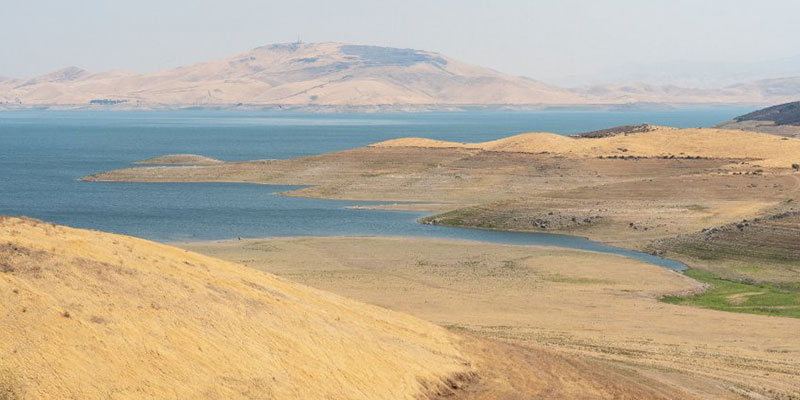With continuing drought emptying California’s reservoirs and surface water, attention is turning to the desalination of bountiful brackish groundwater.
Prominent researcher suggests decentralized desalination as a way to make the most of brackish aquifers
There are many drought classifications: Meteorological drought is determined by how much precipitation has fallen. Hydrological drought is declared after consideration of streamflows, mountain snowpack, and groundwater reserves. And agricultural or ecological drought is determined by impacts on living things.
This year, the Western United States is experiencing all of them during the region’s worst drought in more than 1,200 years, and the Intergovernmental Panel on Climate Change, a United Nations body, expects the situation to keep getting worse. What technical solutions are available to secure a reliable supply of fresh water during this “megadrought” in the West?
Desalination
Desalination stands out as a logical solution since California has a long coastline to draw water from, but large-scale projects have proved problematic for the state. Concern over environmental impacts recently killed plans for Orange County’s enormous Poseidon seawater desalination plant project, which was in the works for nearly 25 years. And coastal California is only one sliver of the West. What can the rest of the parched region do to prosper during long-term aridification?
Fortunately, desalination isn’t just for seawater. There’s a great deal of brackish water hidden all over the West. In fact, in U.S. aquifers, there’s 800 times more brackish water than fresh. While untreated brackish groundwater is too salty for applications like agricultural irrigation, it’s less salty than seawater, which makes it easier and less expensive to desalinate.
Can Small-Scale Desalination Save the West?
Reverse osmosis is a desalination process that forces saline water through membranes that reject salt. Peter Fiske of Lawrence Berkeley National Laboratory in California thinks it’s time to move reverse osmosis desalination inland on a smaller scale.
Fiske, director of the National Alliance for Water Innovation and of the Water-Energy Resilience Research Institute, explained that the permitting for large-scale desalination plants can be a troublesome process, and the construction and operating costs of large distribution networks often kill desalination projects on the drawing board.
Fiske explained that distributed or decentralized desalination — more and smaller desalination plants near the source of need — can avoid the problems of larger-scale infrastructure.
One of the things we’re going to find is there are a lot of little water sources. We’re going to need smaller-scale desalination. We’re going to need it to be very compact and, in a way, rather than making a large treatment plant, we’re going to need lots of little treatment packages.
Fiske envisions a build-out of easily permitted, quickly commissioned water “washing machines” across the West. While most desalination plants operate on fossil fuels because of reverse osmosis energy requirements, Fiske is researching solar power operation and other alternative power sources.
To that end, Fluence has developed small, modular desalination units that are ready to serve today. Modular NIROBOX™ BW units are packaged for quick deployment to transform unusable brackish groundwater into freshwater lifelines for communities, farms, and industrial operations across the West.
As water costs have risen and supplies have dwindled, desalination has become increasingly attractive, particularly above easy-to-desalinate brackish aquifers. With Fluence’s Water Management Services, Western communities and agriculture get the fresh water they need under performance-based BOO, BOOT, and PPP structures that require no upfront investment and include long-term operations and maintenance. Clients only pay for the water. Contact Fluence to find out more.

